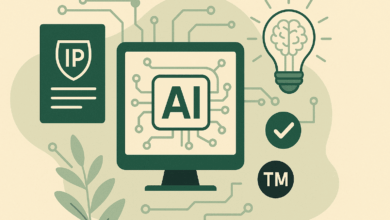
RPA meets GenAI. In today’s breakneck race toward digital transformation, businesses aren’t just trying to keep up, they’re trying to stay alive. The demand to cut costs, boost efficiency, and increase accuracy is relentless. Add to that the chaos of managing sprawling data ecosystems and clunky workflows, and it’s no wonder enterprises are overwhelmed. According to McKinsey, automation technologies alone could drive global productivity growth from 0.5 to 3.4% annually. Sounds promising, right? Yet, nearly half of automation projects still fall flat. Why? Because traditional automation just isn’t smart enough.
Legacy systems, siloed teams, and rigid rules-based automations. They are the culprits holding organizations back from reaching true process optimization. For sure, Robotic Process Automation (RPA) can handle repetitive tasks like a champ, but throw in unstructured data or decisions that require a bit of human judgment? That’s where it stumbles. The outcome? Businesses pour time and money into automation, and still rely heavily on people to catch the curveballs.
But there is a quiet revolution happening beneath the surface. At the heart of this change is a visionary, Kiran Macha. An RPA architect and specialist who is leading the charge at a highly respected public-sector technology organization known for implementing large-scale digital modernization. This expert is rewriting the automation playbook, fusing traditional RPA with cutting-edge technologies like Generative AI (GenAI), cloud-native infrastructure, and custom backend engineering. The mission? Not just to automate, but to elevate.
From the get-go, the architect focused on creating a rock-solid development foundation. It wasn’t just about building bots, it was about engineering solutions that could scale, adapt, and deliver consistently. That meant crafting automation pipelines using UiPath, Automation Anywhere, and Power Automate, while layering in robust backend support through AWS services like Lambda, S3, RDS, and API Gateway. The result was extraordinary: An end-to-end ecosystem that’s lean, efficient, and reliable.
But here’s where it gets exciting. Kiran stepped into the project, the Data Manipulation and Auditing Bot. A powerhouse solution that works across multiple state-run platforms, processes mountains of Word documents using custom .NET C# libraries. It also performs seamless data entry for payment checks and records. The bot isn’t just accurate, it’s near flawless. This is not the average automation. This is high-performance engineering at work.
Kiran didn’t stop there. He took things to a new level by embedding advanced logging, monitoring, and performance optimization into the automation lifecycle. The bots are working around the clock. They are also being observed, evaluated, and enhanced based on real-time metrics. It’s automation that learns and improves.
Then came another game-changer: a document processing solution developed for a healthcare agency using IQ Bot, after rigorous OCR/ICR tool evaluations. Kiran ultimately selected ABBYY for its superior capabilities. He built a system that extracts critical data from healthcare plan applications and pushes it across multiple downstream systems, all without human intervention. That one bot now saves the organization 9,600 hours a year. That’s five full-time employees’ worth of work. That’s what we call: Reclaimed, Redirected, and Reinvested.
But perhaps the biggest breakthrough came from integrating GenAI into the automation strategy. Let’s face it: rule-based bots can only take you so far. They don’t think. They don’t adapt. Enter GenAI, a force multiplier that brings intelligence into the mix. With GenAI, Kiran is pushing automation into new territory. Now, bots aren’t just following instructions, they’re making context-aware decisions, handling ambiguous data, and learning from historical inputs.
Sharing his opinion on this, Kiran says, “GenAI has revolutionized how we think about automation. We are no longer just mimicking human actions; we’re now building systems that can reason, adapt, and even learn from previous decisions. This is a massive leap forward.”
For instance, a chatbot deployed at a state-level call center. The chatbot is built using Microsoft’s Bot Framework, Node.js, and QnA Maker. It uses conversational AI to handle user queries and integrates with backend systems to complete requests without agent intervention. It’s more than a helpdesk; it’s an intelligent digital assistant. Customers get faster responses. Agents get to focus on higher-value interactions. Everybody wins.
What truly stands out is how these bots are designed not just for automation, but for collaboration. They work with humans, not just in place of them. Think of it as digital coworkers that take on the grunt work so real people can focus on strategy, innovation, and value creation. Kiran’s approach reflects this ethos; every tool is built with the end-user experience in mind.
These efforts aren’t isolated wins, they are part of a much bigger picture. It’s a conscious move away from basic task automation toward smarter, more adaptive systems that can grow and change with the business. Kiran Macha has been instrumental in helping the organization leap from reactive automation to proactive digital transformation.
The playbook also includes a heavy investment in security and compliance frameworks. This is crucial for deploying automation in government ecosystems. Kiran ensures that innovation doesn’t compromise integrity by embedding role-based access control, audit trails, and encryption standards into the architecture. This approach safeguards data integrity while allowing for innovation.
What makes his work especially impactful is its ripple effect. It’s not just about saving hours or cutting costs. It’s about redefining how government and public-sector services can operate. It’s about showing what’s possible when innovation is coupled with vision. Nonetheless, it’s about setting a new standard for what automation can achieve.
The world today is experiencing a major industry transition. Beyond just RPA, organizations implement intelligent automation to remain resilient and agile. Leading the change are trailblazers like Kiran, who do not just deploy bots but reinvent what working looks like.
The future of work isn’t coming. It’s already here. And the engineers of that future are the ones blending human ingenuity with machine capability. Within the hands of visionary leaders like Kiran, it is not merely a technical solution but a kind of competitive advantage, completely new in thinking, working, and delivering value at scale.




